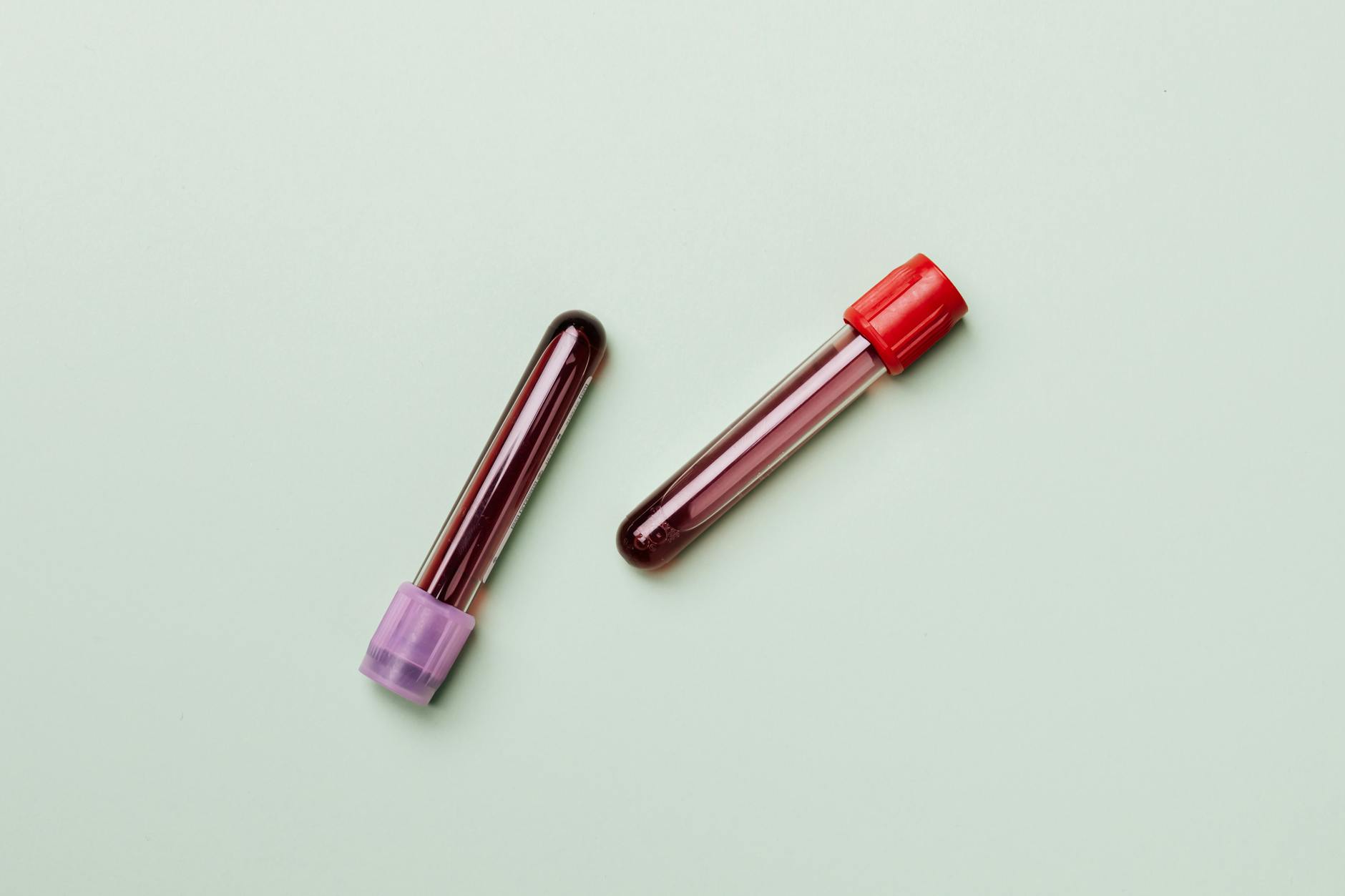Walking into your first allergy test can feel a little overwhelming, but it doesn’t have to be. Your allergist aims to better understand the triggers behind your symptoms, guiding you toward long-term relief. Expect a mix of detailed questions about your health history and simple, painless tests to identify allergens causing discomfort. This initial step helps build a personalized plan, so you’ll leave with more clarity and confidence about managing allergies.
Understanding Allergy Testing
Allergy testing is a critical step in identifying what triggers your allergic reactions. Whether you’re sneezing, itching, or experiencing more severe symptoms, knowing how these tests work, and the different types available, can provide clarity and help you take control of your health.
Types of Allergy Tests
Not all allergy tests are created equal. Depending on your symptoms and medical history, your allergist may recommend one or more of these common methods:
- Skin Prick Test This is one of the most widely used tests. Your doctor or nurse places small amounts of potential allergens on your skin, usually on the forearm or back. They then lightly prick the skin to introduce the substances. If a red, itchy bump forms, it’s a sign of an allergic reaction. It’s quick, simple, and provides results within 15-20 minutes.
- Blood Test If you’re unable to undergo a skin test due to certain conditions like eczema or medications, a blood test may be an option. This test measures specific antibodies in your blood (known as IgE antibodies) linked to various allergens. While it’s less immediate than skin testing, it’s ideal for detecting a broad range of sensitivities.
- Patch Test Concerned about contact allergies, like reactions to soaps or metals? A patch test involves applying adhesive patches to your skin containing suspected allergens. These patches remain in place for 48 hours, and your skin is evaluated for reactions. This test is commonly used for diagnosing delayed reactions.
Each method has its strengths, and your allergist will guide you in choosing the most appropriate one.
 Photo by Kaboompics.com
Photo by Kaboompics.com
How Allergy Tests Work
Allergy tests are designed to safely expose your body to small amounts of potential allergens. By measuring your body’s response, your allergist can pinpoint specific triggers. For example:
- In skin tests, the reaction on the skin (like redness or swelling) indicates sensitivity.
- For blood tests, the test evaluates the level of IgE antibodies in response to allergens.
- Patch tests identify delayed skin reactions to substances you might contact daily.
These tests aren’t just about identifying what causes your symptoms. They also provide insight into the severity of your allergies, helping your doctor tailor treatments and prevention plans.
Whether through a quick prick, a small blood sample, or an adhesive patch, understanding how your body reacts is the first step toward managing allergies effectively.
Preparing for Your First Allergy Test
Getting ready for your first allergy test is a crucial part of the process. The test is designed to identify potential allergens triggering your symptoms, and being prepared ensures accurate results while minimizing stress. Knowing what to expect and how to prepare can make the experience comfortable and stress-free.
Medical History Review
Before your test, your allergist will want a detailed overview of your medical history. Why is this so important? Your body’s allergy responses don’t exist in a vacuum—they’re often linked to patterns in your own health or family history. Be prepared to discuss:
- Previous Reactions: Bring up any past allergic reactions, even if they seemed minor at the time.
- Family History: Let your allergist know if close relatives suffer from allergies, asthma, or eczema.
- Symptoms You Face: note when symptoms occur, how severe they get, and any suspected triggers.
Think of this review as painting a complete picture of your situation. The more details you provide, the better. If you have any old test results or medical records related to allergies, don’t hesitate to bring them along. Specifics help your allergist narrow down possible allergens.
Medications to Avoid
Certain medications can interfere with allergy tests, leading to inaccurate results. If you’re on any regular medications, your allergist will guide you on what to stop and for how long, but some general guidelines include:
- Antihistamines (e.g., Benadryl, Claritin, Zyrtec): Discontinue these at least 5-7 days before testing.
- Cold or Sinus Medications: These often contain antihistamines and should also be avoided.
- Certain Antidepressants: Some may affect test results; consult your allergist for specifics.
- Steroids (if applicable): High doses could suppress skin reactions, but this depends on your dosage and condition.
Stopping medication can be tricky, especially if it manages unrelated symptoms. Always get your doctor’s input first. If stopping meds isn’t possible, a blood test might be a better alternative, as it doesn’t rely on skin reactions.
What to Wear
It might not seem like a big deal, but dressing right can make the test more comfortable. Skin tests typically involve your forearms or back, so wearing appropriate clothing is key. Here are a few tips:
- Loose-Fitting Tops with Easy Access: Sleeveless or short-sleeve shirts work best for forearm testing.
- Button-Up or Wide-Neck Shirts: These are ideal for back testing, as they’re easy to adjust without fully undressing.
- Comfortable Layers: Allergy offices might be chilly; bring a sweater you can easily remove if needed.
Choosing clothing you’re at ease in ensures the test goes smoothly. Plus, you’ll avoid unnecessary discomfort from tight or restrictive outfits during the procedure.
Preparing for an allergy test isn’t just about following instructions—it’s about setting yourself up for a smooth and informative visit. A little preparation can make a world of difference when it comes to accuracy and comfort.
The Allergy Testing Process
Allergy testing is a structured process designed to uncover the specific substances causing your allergic reactions. Knowing how the process works before you step into the clinic can ease nerves and prepare you for what’s ahead. From initial paperwork to observing your body’s reactions, here’s a clear breakdown of what to expect.
Arrival at the Clinic
Walking into an allergy clinic for the first time can feel a bit like entering uncharted territory. Here’s what typically happens when you arrive:
- Paperwork First: You’ll be asked to fill out forms detailing your medical history, current symptoms, and any known allergies. This gives the allergist vital context about your condition.
- Initial Check-In: A nurse or technician may take basic vitals, like checking your blood pressure or pulse. This ensures you’re in good health for testing.
- Discussion Time: Expect a brief chat with your allergist about your health history. They might ask about past reactions or family allergies to narrow down potential triggers.
This stage is about setting the stage for the test while creating a full picture of your health and concerns.
The Test Procedure
Once pre-test steps are complete, the actual allergy testing begins. There are a few common methods, and the process will vary slightly based on the type:
- Skin Prick Test: Your allergist will place small drops of suspected allergens on the skin—usually your back or forearm. A sterile needle or small device lightly punctures the skin to introduce these allergens. It’s not painful, but you may feel a mild prick or itch.
- Intradermal Test (If Needed): For more detailed results, some allergens might be injected just below the skin’s surface. This method is often used if initial results are unclear.
- Blood Test: If you’re unable to undergo skin testing (due to conditions like eczema or certain medications), a blood test may be used. A small sample is sent to a lab to measure your IgE antibody levels in response to specific allergens. The process is straightforward and involves a quick blood draw.
Testing takes anywhere from 15 minutes to an hour depending on the methods used and the number of allergens being tested.
Monitoring Reactions
Reacting to the test results is where the real clarity comes in. During the procedure, medical staff closely monitor you for any immediate allergic responses.
- Skin Tests: After allergen exposure, they’ll look for signs like redness, swelling, or itchy bumps. These reactions often appear within 15-20 minutes.
- Delayed Reactions: In some cases (especially with patch testing), reactions could take hours or even days. You’ll be advised on what to watch for in the coming days.
After the test is complete, your allergist might apply a soothing cream to reduce any itching or discomfort from skin tests. If a blood test was performed, you’ll receive results and analysis at a later appointment.
Throughout the process, your allergist will interpret results to identify the culprits behind your symptoms. While the procedure itself is straightforward, it paves the way for actionable solutions.
 Photo by Tima Miroshnichenko
Photo by Tima Miroshnichenko
Interpreting Your Results
Once your allergy test is complete, the next step is understanding what the results mean for you. Interpreting these results is crucial to forming an effective treatment plan. Your allergist will provide clarity on whether you have specific allergies and the severity of those sensitivities.
Positive vs. Negative Results: Explain the differences and next steps for each type of result
Interpreting your results starts with distinguishing between positive and negative outcomes. Simply put:
- Positive Results: These suggest that your immune system reacts to certain allergens. For skin tests, this is indicated by swelling, redness, or raised bumps at the test site. For blood tests, a high level of allergen-specific IgE antibodies confirms sensitivity. A positive result doesn’t always mean a severe allergy; it indicates your body recognizes the allergen. What happens next? Your allergist will review the results alongside your symptoms and medical history. Sometimes, you may simply need to manage exposure. In more serious cases, treatments like allergy shots or medications may be required.
- Negative Results: A negative result generally means you’re not allergic to the tested substances. With skin tests, no reaction on the skin confirms this. For blood tests, low or undetectable IgE levels indicate the absence of a sensitivity. But keep in mind that no test is perfect—if you still have unexplained symptoms, your doctor might investigate further or try alternative testing methods.
Your results don’t stand in isolation. They’re matched with your personal history to provide a full picture. So even if you test positive, it doesn’t automatically mean you need to eliminate the allergen completely.
Follow-Up Testing or Treatment: Describe potential follow-up actions based on test outcomes
Based on your allergy test results, your allergist might recommend further steps to narrow down triggers or begin treatment. Here’s what those steps could look like:
- Additional Testing (If Needed): If some results are inconclusive, follow-up tests like an intradermal skin test or elimination diet may be recommended. These deeper evaluations can confirm allergies, especially for foods or substances with ambiguous results.
- Allergy Management Plan: For positive results, next steps may include:
- Avoidance Strategies: Identifying and reducing exposure to allergens in your environment. For example, using hypoallergenic bedding or avoiding certain foods.
- Medication Options: Prescription or over-the-counter options like antihistamines, nasal sprays, or epinephrine may be discussed.
- Allergy Immunotherapy: Allergy shots or sublingual tablets could be offered for long-term relief, especially for severe allergies to things like pollen or pet dander.
- Symptom Tracking: Sometimes, your allergist will ask you to closely monitor your reactions over time. Keeping a journal of symptoms helps refine your treatment approach.
- Regular Follow-Ups: Allergies can evolve. Even if your results seem straightforward today, regular visits can keep your management plan on track. If sensitivities change, adjustments will be made.
While the testing process identifies allergens, the follow-up ensures those findings improve your quality of life. By taking a targeted approach, your allergist can help you manage symptoms and regain control over your environment.
Common Myths About Allergy Testing
When it comes to allergy testing, misconceptions are everywhere. From fears about pain to confusion over who needs testing, these myths often lead to hesitation or misunderstanding. Let’s clear up the confusion by tackling some of the most common myths.
Allergy Tests Are Painful
The idea of allergy testing can make anyone nervous—especially if you’re imagining needles or discomfort. But here’s the truth: it’s far less intimidating than you might think.
- Skin Prick Test: Many fear that this common test will be painful. In reality, the skin is lightly scratched with a tiny, sterile device. Most people describe the sensation as a mild tickle or a slight itch, not actual pain.
- Blood Tests: For those who can’t do skin tests, blood tests offer a great alternative. It’s just a standard blood draw, like the kind done during a check-up.
- Patch Tests: These are adhesive patches applied to your skin. You won’t feel any pricking or stinging—just adhesive sticking to your skin for 48 hours.
Patients commonly report surprise at how quick and comfortable the testing process is. If a minor itch or a quick pinch feels uncomfortable, think of it this way: it’s a small inconvenience for long-term relief.
 Photo by cottonbro studio
Photo by cottonbro studio
Only Children Need Allergy Tests
Another common misconception? That allergies are only a “childhood thing.” Allergies don’t magically stop as you age—they can appear anytime, even in adulthood.
- New Allergies as Adults: Many adults develop sensitivities they never had before. For example, someone who never reacted to pollen in their 20s might develop hay fever in their 40s.
- Worsening Symptoms Over Time: If allergies seem mild, you might not think testing is necessary. But untreated adult allergies often worsen, affecting daily life more than you realize.
- Common Triggers for Adults: Dust mites, mold, and certain foods are just as likely to cause allergic reactions in adults as in kids.
Skipping testing based on age means missing out on relief. Whether you’re 5 or 55, if allergies are disrupting your life, testing can help uncover the cause. Remember, no one is “too grown-up” to deal with itchy eyes, sneezing fits, or skin irritation.
These myths might be common, but they aren’t accurate. By learning what allergy testing really involves, more people can get the care they need for a healthier, more comfortable life.
Conclusion
Wrapping up your first allergy test experience, it’s important to remember that this is just the beginning of your journey toward managing and treating your allergies effectively. An allergy test provides crucial insight into what’s triggering your symptoms, laying the groundwork for a personalized treatment plan.
Key Takeaways
- Clear Identification of Allergens: The test pinpoints specific triggers responsible for your allergic reactions.
- Customized Treatment Plans: Your allergist will guide you based on the results, whether it involves avoiding allergens, medication, or immunotherapy.
- A Better Understanding of Your Symptoms: You’ll leave with a clearer picture of how your body reacts to allergens and what to do next.
Next Steps After Your Test
Once your test results have been interpreted, work closely with your allergist to develop a tailored approach. This might include lifestyle adjustments, monitoring symptoms, or follow-up appointments to ensure you’re on the right track. Knowing how to manage your allergies effectively can significantly improve your daily life.
For anyone hesitant about their first allergy test, ask yourself: isn’t it worth uncovering the triggers and finding relief? With the right support, managing allergies becomes less daunting and more empowering.


